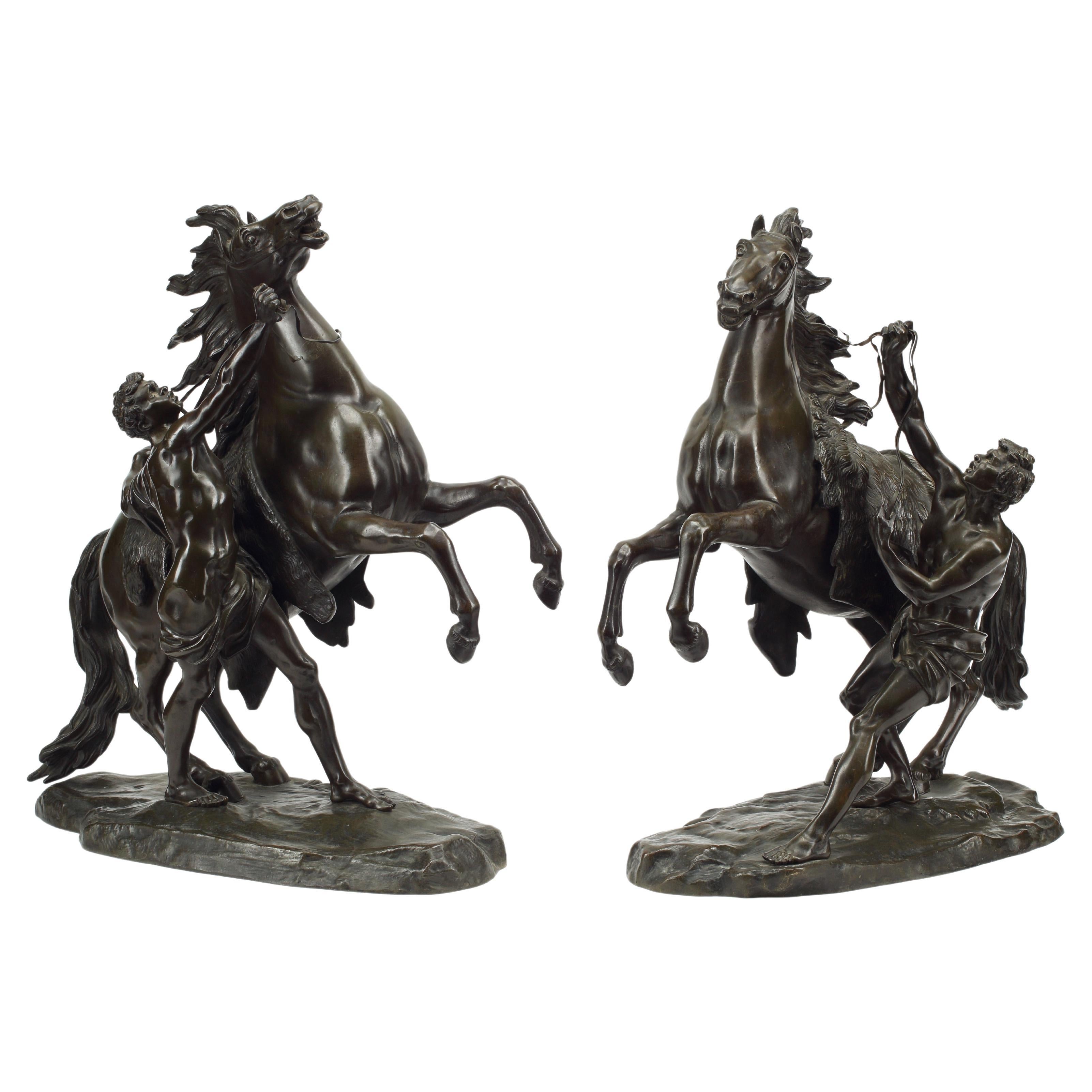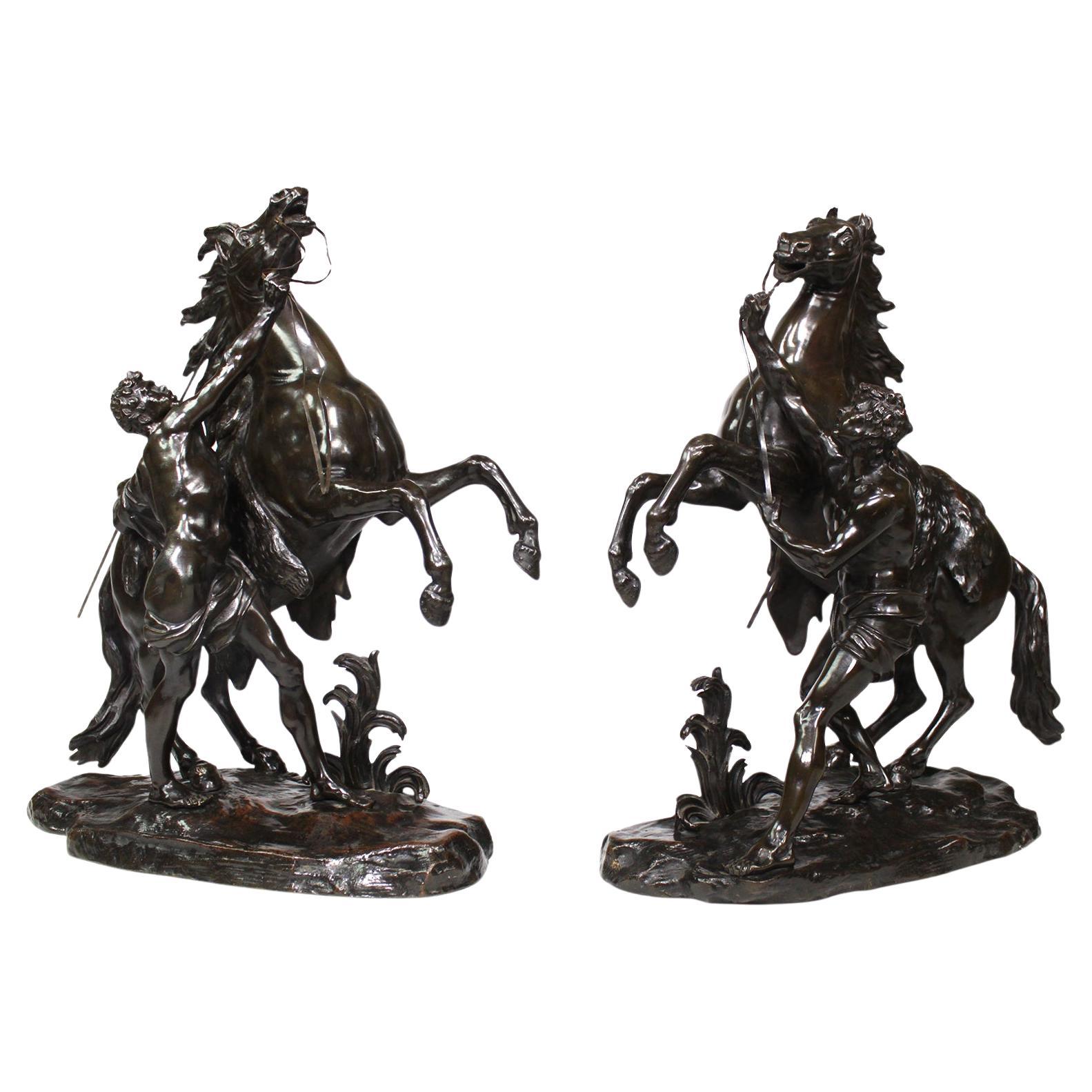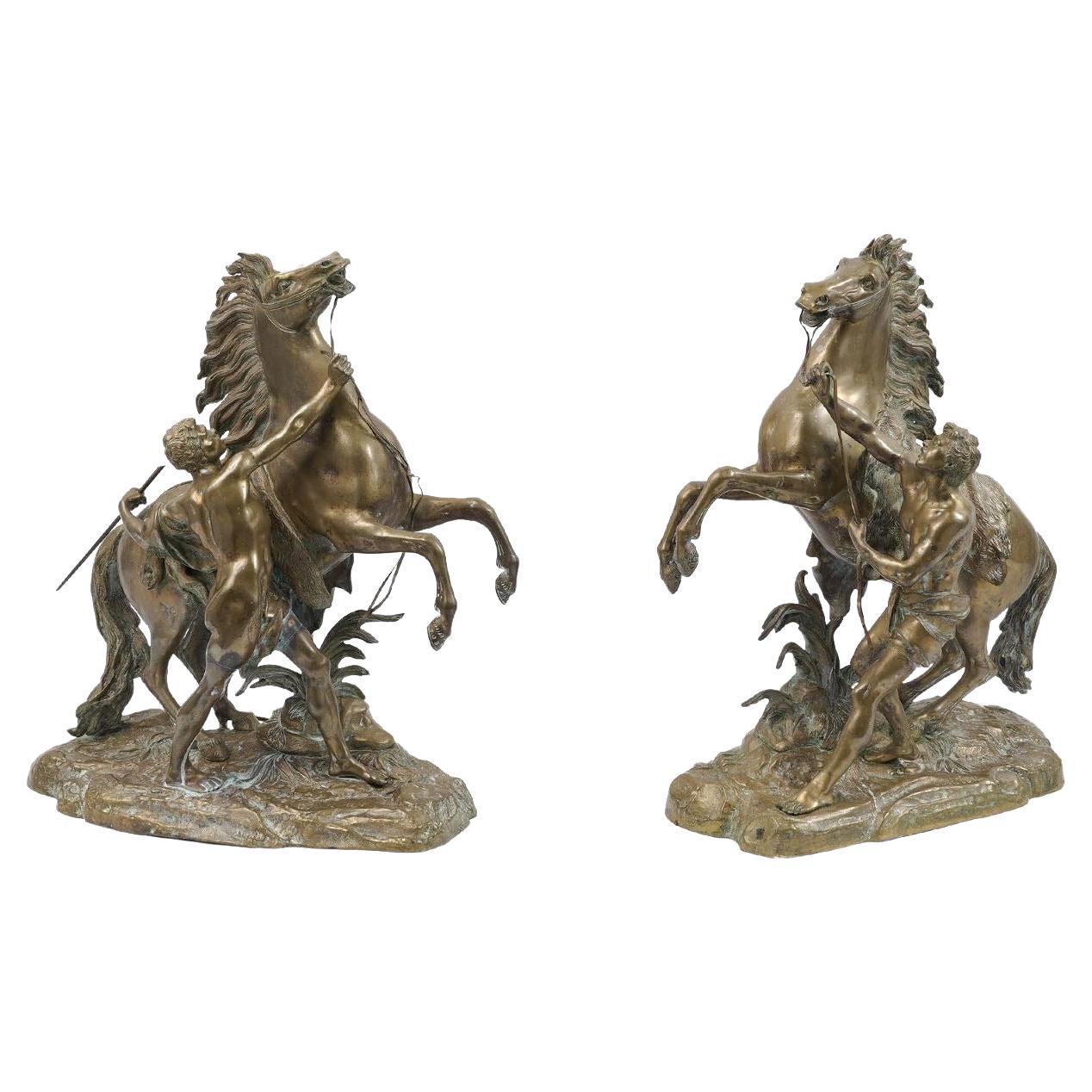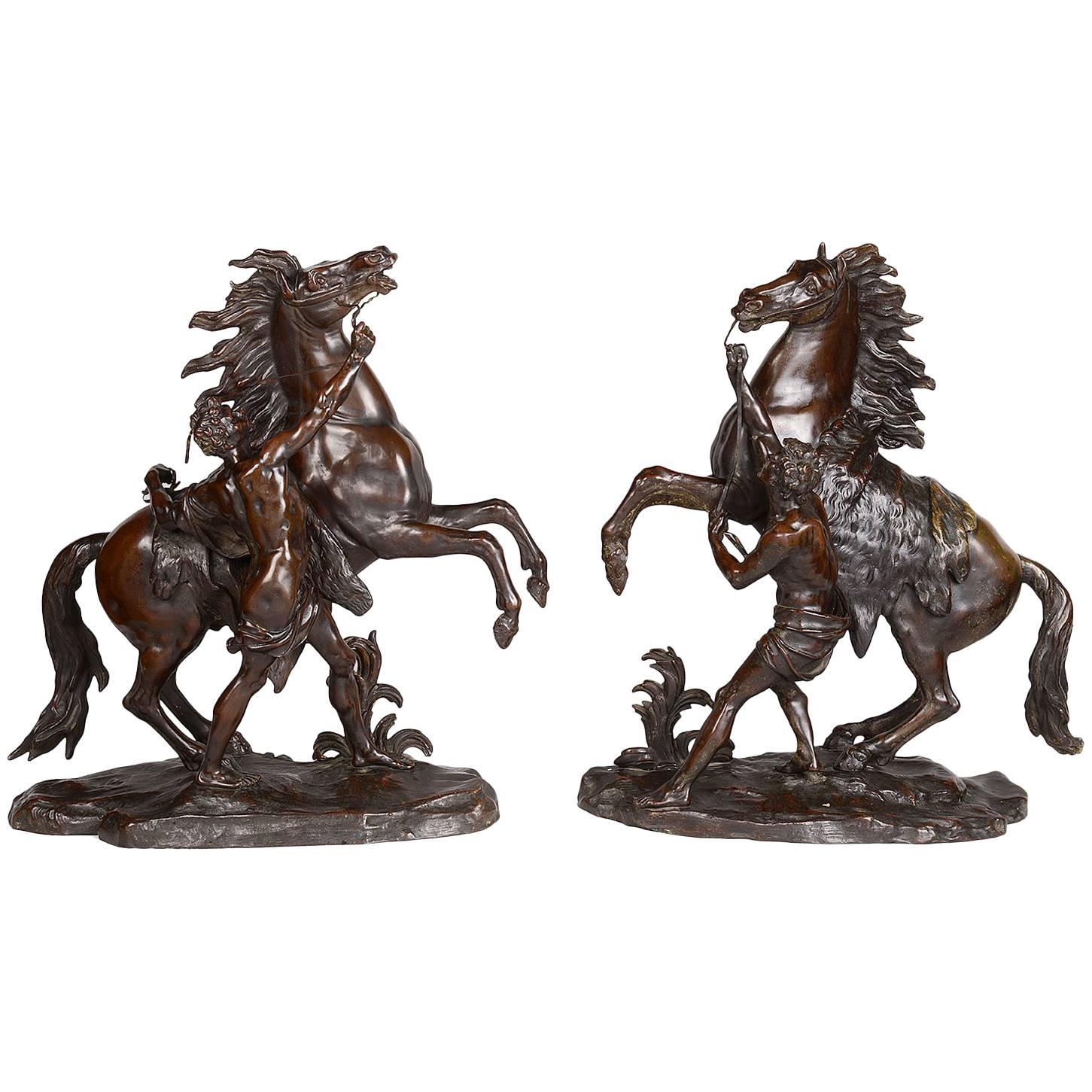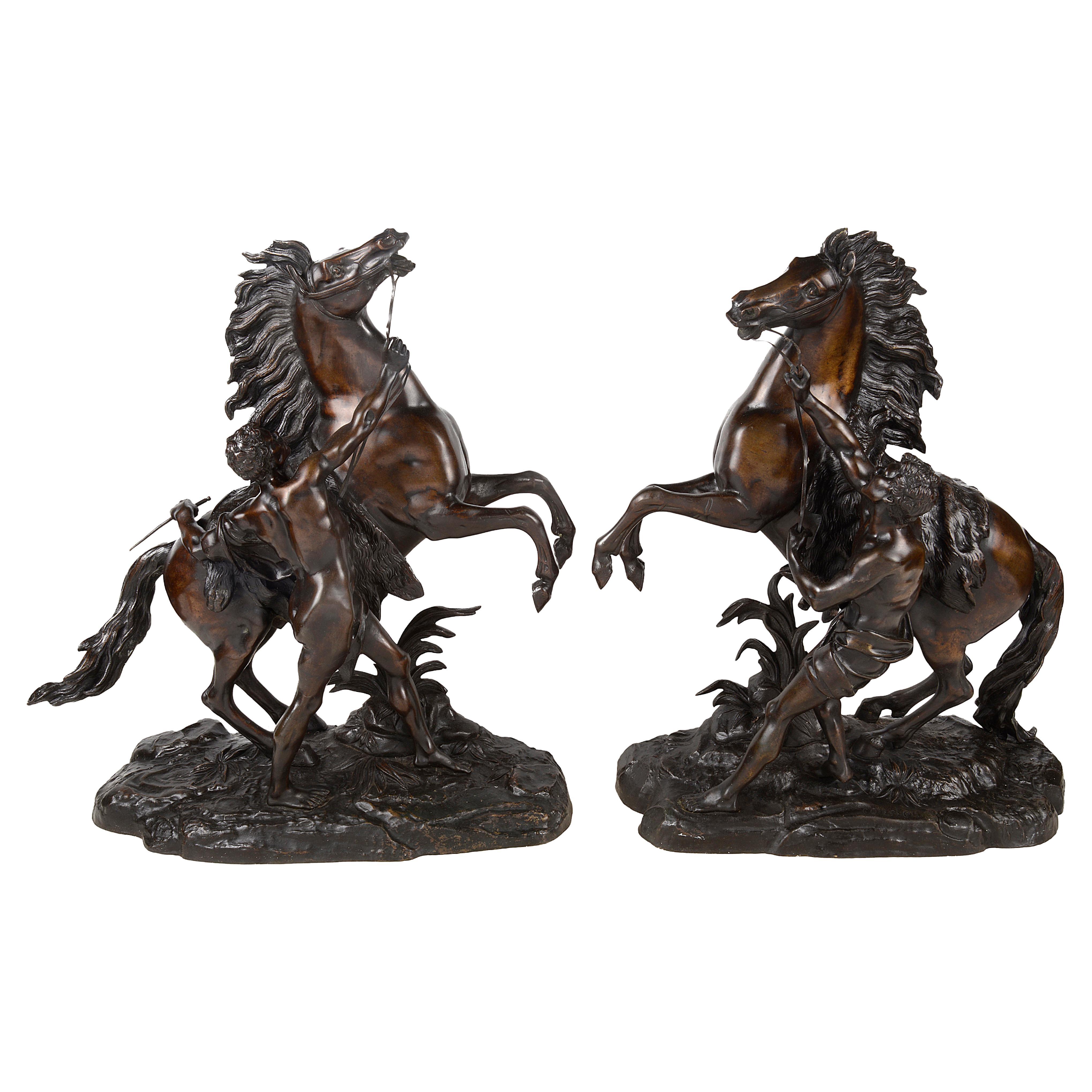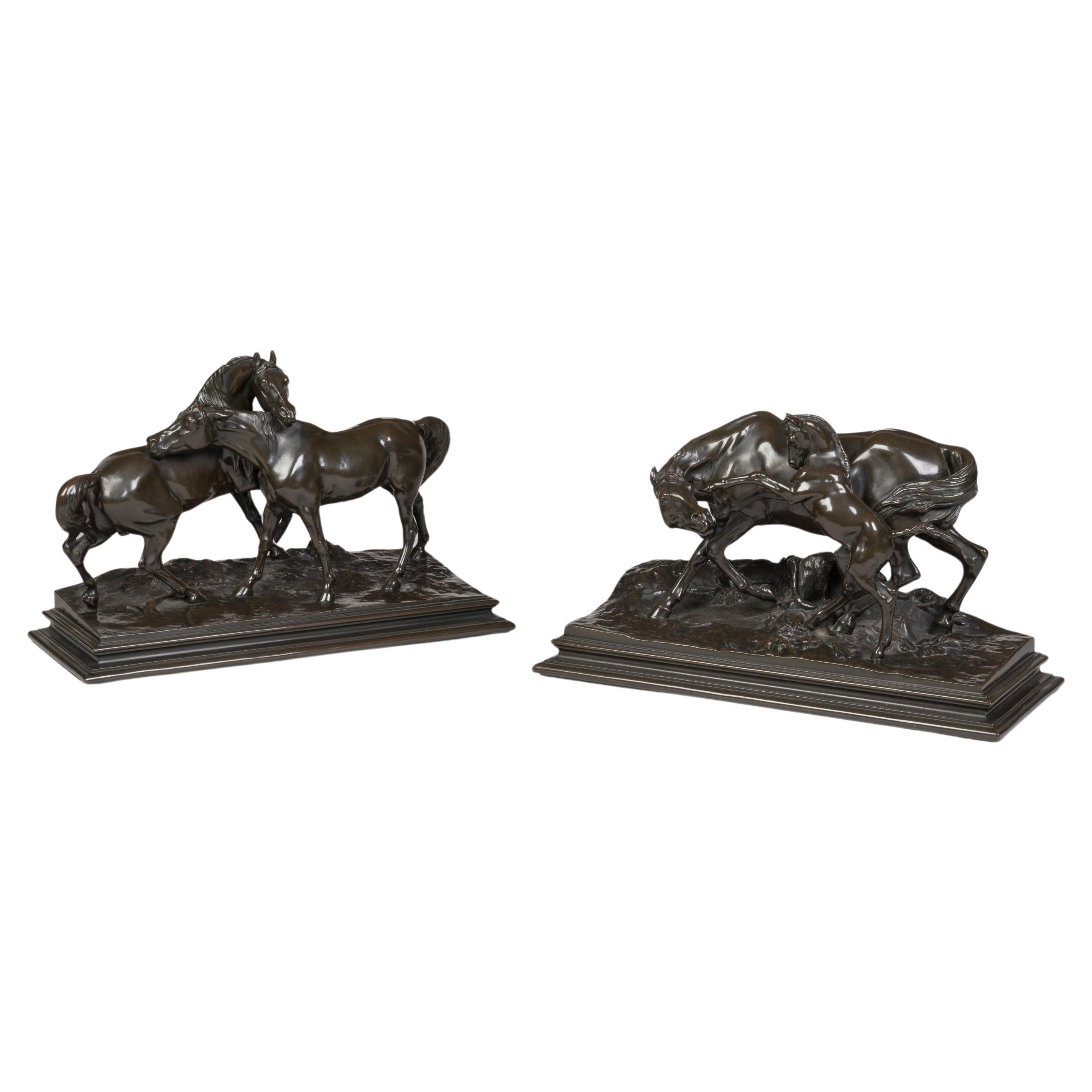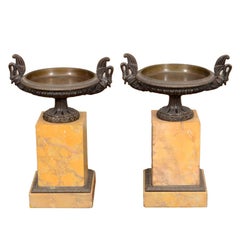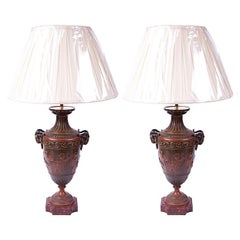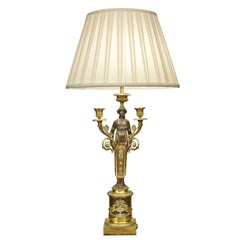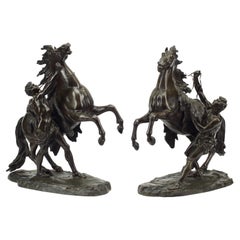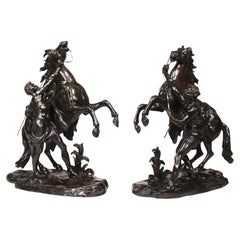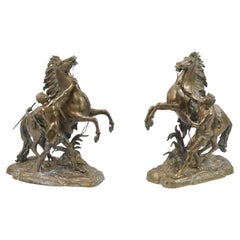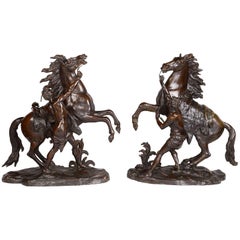Items Similar to Pair of 19th Century French Patinated Bronze Models of the Marly Horses
Want more images or videos?
Request additional images or videos from the seller
1 of 2
Pair of 19th Century French Patinated Bronze Models of the Marly Horses
$9,500
£7,175.39
€8,292.68
CA$13,325.20
A$14,821.05
CHF 7,757.02
MX$180,767.92
NOK 97,469.77
SEK 91,682.90
DKK 61,896.81
About the Item
Pair of 19th century French patinated bronze models of the Marly Horses.
- Similar to:Guillaume Coustou (Sculptor)
- Dimensions:Height: 19 in (48.26 cm)Width: 8 in (20.32 cm)Depth: 16 in (40.64 cm)
- Style:Napoleon III (Of the Period)
- Materials and Techniques:Bronze,Cast
- Place of Origin:
- Period:
- Date of Manufacture:circa 1870
- Condition:Wear consistent with age and use.
- Seller Location:Long Island City, NY
- Reference Number:Seller: 31051stDibs: LU785710816753
About the Seller
5.0
Recognized Seller
These prestigious sellers are industry leaders and represent the highest echelon for item quality and design.
Established in 1996
1stDibs seller since 2004
66 sales on 1stDibs
Typical response time: 1 hour
Associations
The Art and Antique Dealers League of AmericaAntiques Associations Members
- ShippingRetrieving quote...Shipping from: Long Island City, NY
- Return Policy
Authenticity Guarantee
In the unlikely event there’s an issue with an item’s authenticity, contact us within 1 year for a full refund. DetailsMoney-Back Guarantee
If your item is not as described, is damaged in transit, or does not arrive, contact us within 7 days for a full refund. Details24-Hour Cancellation
You have a 24-hour grace period in which to reconsider your purchase, with no questions asked.Vetted Professional Sellers
Our world-class sellers must adhere to strict standards for service and quality, maintaining the integrity of our listings.Price-Match Guarantee
If you find that a seller listed the same item for a lower price elsewhere, we’ll match it.Trusted Global Delivery
Our best-in-class carrier network provides specialized shipping options worldwide, including custom delivery.More From This Seller
View AllPair of Early 19th Century French Bronze Tazzas on Sienna Marble Stands
Located in Long Island City, NY
Pair of early 19th century bronze tazzas on sienna marble stands. With swan-shaped handles.
Category
Antique 1830s French Vases
Materials
Marble, Bronze
Pair of 19th Century Bronze and Sienna Marble Urns
Located in Long Island City, NY
Pair of 19th century bronze and Sienna marble urns, circa 1830.
Category
Antique 19th Century Urns
Materials
Marble, Bronze
$10,500 / set
Pair of Early 19th Century French Empire Neoclassical Bronze Urns Wired as Lamps
Located in Long Island City, NY
Pair of Early 19th Century French Empire Neoclassical Bronze Urns, Wired as Lamps. Featuring ornate swag garlands and rams heads, with a frieze of dancing putti.
Category
Antique 1810s French Empire Table Lamps
Materials
Bronze
Swedish Neoclassical Ormolu and Patinated Bronze Candelabra
By Lindroth
Located in Long Island City, NY
A Swedish Neoclassical Ormolu And Patinated Bronze Candelabra
electrified. Attributed to R.F. Lindroth.
Category
Antique 19th Century Swedish Table Lamps
Materials
Bronze
Pair of Early 19th Century Neoclassical Terracotta Urns and Lids on Plinth Bases
Located in Long Island City, NY
Each of this pair of large early 19th century terracotta campagna urns, in the neoclassical style, sits atop a molded socle plinth base, its baluster body ornamented with gadrooning,...
Category
Antique 1820s English Regency Urns
Materials
Terracotta
Pair of 19th Century Painted Cast Iron Urns
Located in Long Island City, NY
Pair of 19th century painted cast iron urns.
Category
Antique 19th Century Unknown Urns
Materials
Iron
$28,000 / set
You May Also Like
Pair of Patinated Bronze Marly Horse Sculptures, 19th Century French
Located in El Monte, CA
A pair of 19th century patinated bronze sculptures following the renowned "Marly Horses" created by celebrated baroque sculpture Guillaume Coustou. This pair is inscribed "Coustou" o...
Category
Antique 19th Century French Animal Sculptures
Materials
Bronze
Pair of French 19th/20th Century Patinated Bronze Sculptures "The Marly Horses"
By Guillaume Coustou
Located in Los Angeles, CA
A Fine Pair of French 19th/20th Century Patinated Bronze Sculptures of "The Marly Horses" After the original by Guillaume Coustou (French, 1677-1746). The large pair of equestrian br...
Category
Antique Early 1900s French Louis XV Figurative Sculptures
Materials
Bronze
Pair 19th Century French Bronze Marly Horse Sculptures After Coustou
By Guillaume Coustou
Located in New York, NY
Pair of 19th century French bronze marly horse statues after the original models by Guillaume Coustou (1677-1746).
Category
Antique Late 19th Century French Neoclassical Figurative Sculptures
Materials
Marble, Bronze
Large Pair of 19th Century Bronze Marly Horses, after Coustou
By Coustou
Located in Brighton, Sussex
A very impressive pair of 19th century bronze Marly horse, having a good patina, after Guillaume Coustou the elder 1677-1746.
Category
Antique 19th Century French Animal Sculptures
Materials
Bronze
Large Pair of 19th Century Bronze Marly Horses, After Coustou
By Guillaume Coustou
Located in Brighton, Sussex
A very impressive pair of 19th century bronze Marly horse, having a good patina, after Guillaume Coustou the elder 1677-1746.
Category
Antique 19th Century French Animal Sculptures
Materials
Bronze
Pair of 19th Century French Bronzed Horse Group Electrotype by Pierre-Jules Mêne
By P.J. Mêne
Located in London, GB
A Pair of Bronzed Electrotype Equestrian Groups
By Pierre-Jules Mêne
Both groups patinated to a bronze finish, one horse group known as ‘Jument Arabe et son Poulain, No. 1, Kemlem-H...
Category
Early 20th Century French Sporting Art Animal Sculptures
Materials
Metal
More Ways To Browse
Cast Bronze Horse
19th Century Bronze Horse Sculpture
Pair Of Horses Sculpture
Guillaume Bronze
Marly Horse
Bronze Marly Horses
Marly Horse Sculptures
Coustou Bronze
Coustou Bronze Marly Horse
Antique Metal Sculpture
Modern Face Sculptures
Used Draperies
Tree Trunk
Antique Bronze Sculpture Artists
Used Helmets
Italian Head Sculpture
Austrian Designers
African Sculptures
